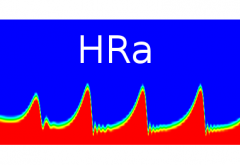In the improvisation workshop on learnjazzstandards(dot)com I learned a simple system of 4 notes for the common jazz chords. Jazz friends already knew this concept. Take the triad and add a well-fitting note. In major and dominant, a second is added to the major triad. In minor and half-diminished or fully diminished, a fourth is added to the triad. For example:
Cmaj7: C D E G
C7: C D E G
Cm7: C Eb F G
Cm7b5: C Eb F Gb
Cdim: C Eb F Gb
Of course, this concept needs practice. Note that the mini scales are the same in two cases. For 60 chords, you need just 36 mini scales. I set about learning them with enthusiasm. I estimate that I will need about six months before I can improvise with them fairly fluently.
I also thought about how to expand the system. You could take the four-note chord and add a second or fourth. In jazz, it is better to use the sixth rather than the major seventh for a major chord.
Cmaj7: C D E G A (major pentatonic)
C7: C D E G Bb
Cm7: C Eb F G Bb (minor pentatonic)
Cm7b5: C Eb F Gb Bb
Cdim: C Eb F Gb A
